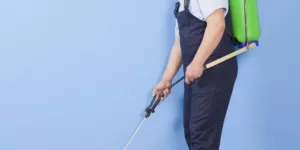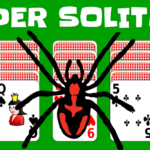Pest control is a huge industry. Service revenue is slated to reach $10 billion by 2020, and the industry is expected to continue on its rapid growth path. The industry has several new technologies that are helping rid homes of pests faster than ever before.
The leading technological advancements, includes:
1. Bio-Rational Materials
Bio-rational materials are all about one thing: minimal environmental impact. These materials will become the standard as people become more conscientious about the environment. Integrated Pest Management (IPM) utilizes these materials as the standard in the industry.
Proactive in nature, this material is sustainable and provides little drawback.
IPM requires:
- Monitoring
- Early detection
- Selective products
Pheromones may be used in this case to trap pests and may be added to insecticides to help control the pest population. The idea is that these bio-rational materials, when used in conjunction with insecticides, can be far more potent.
There is also insect growth regulators and other materials that will work to control the pest population while not killing everything in sight with toxicity.
Pheromones are being used a lot in research and trials against ants. There are tests being conducted on the Argentine ant, which has shown that the use of pheromones can help push the ant further into the insecticide zone.
The idea is that the ant will walk into the insecticide, pick it up, and die shortly after.
Insecticide may even be transported back to the colony to help kill other ants. With the use of bio-rational materials, it will be easier to keep control of insect and rodent populations. Mating disruption materials are also being tested to prevent certain pests from being able to find a mate.
2. Green Products – Advanced
Green products are nothing new. We’ve seen green products on the market for decades, but advancements are being made behind the scenes. Second-generation green products are changing the way that pest control companies attack pest problems.
Eco-protection is the key for green products.
Second-generation products will offer:
- Higher efficacy
- Fewer downsides
- Potent ingredients
These products may have subtle differences, such as a lower “scent level,” which attracts more pests while also being green.
We expect to see a lot of advancements in the green products industry in the near future.
3. Advanced Monitoring Systems
Monitoring for pests is becoming more plausible in recent years. Companies are now able to use advanced monitoring systems to capture data and better understand the extent of pest problems.
Mobile data capture allows for real-time data to be captured and stored.
Property managers can now also utilize advanced monitoring and communication tools to better communicate with pest control companies. For example, a manager can hop on FaceTime and stream the problem to a pest control company.
Utilizing this data, customized pest control can be offered.
You may also need emergency service that’s hassle free to correct the problem. Mobile and communication technologies are expected to become the next “big thing” for pest control companies.
This technology will allow for rapid solutions to be deployed and faster estimates.
4. Birth Control for Pests
If pests couldn’t reproduce, how much of a problem would they pose? Probably not much. Right? Well, scientists have been working on a form of birth control that works for rodents. This birth control will allow your pests to live a normal life, but not be able to reproduce.
Specialized, this birth control will target specific pests, such as rodents, and will leave other animals or pests alone.
This is the same idea that has been used on births for years. Pigeons have had their population better managed using a form of birth control. While this doesn’t put an end to the immediate problem, it’s a humane way to control pest populations.
Imagine this application used on a mass scale.
While too much control would harm wildlife and pests, the right amount of birth control will keep pest populations under control. This may have future use for everything, from fleas to rodents and even ants.
But rodents will come first.
One thing we’re not seeing used extensively as of yet are apps. The ability to incorporate apps to help identify and offer potential pest control options is something we would love to see. Some companies are incorporating apps into their offering to allow customers to schedule their next pest control appointment.








